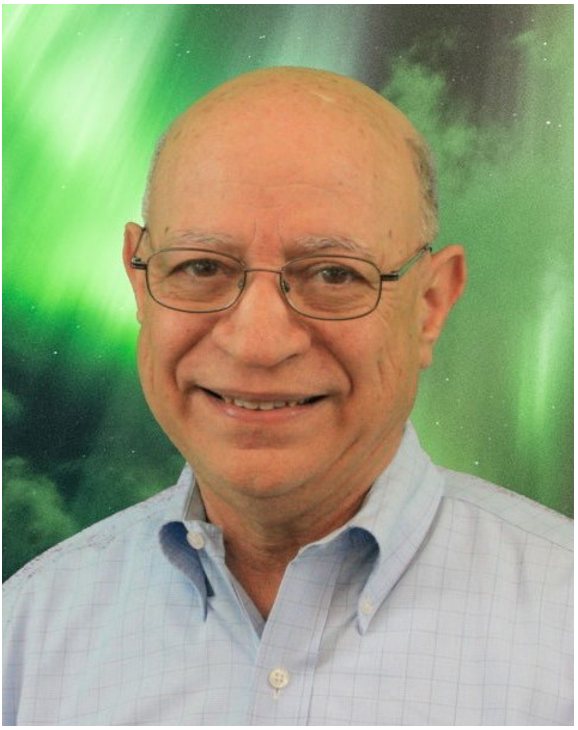
Department
School
Expertise
Education
Brief Biography
Dr. Robinson’s career spans more than four decades of scientific research and management. Since receiving his PhD in Space Physics at Rice University, he has held positions in industry, government and academia, including 22 years as a Program Officer at the U. S. National Science Foundation, where he managed a portfolio of cooperative agreements for the operation of the U. S. network of incoherent scatter radars, and was the disciplinary technical coordinator for the Center for Integrated Space Weather Modeling. As a Research Professor at Catholic University, Dr. Robinson is currently the Principal Investigator of the six-institution Partnership for Heliophysics and Space Environment Research (PHaSER), a cooperative agreement from NASA Goddard Space Flight Center supporting 130 scientists at Goddard’s Heliophysics Science Division. He continues his research as a member of the Geospace Dynamics Constellation Internal Science Team.Research Interests
Dr. Robinson’s research has focused on multi-instrument studies of auroral electrodynamics at high latitudes. He has conducted numerous experimental campaigns using ionospheric radars in Alaska, Greenland, and Canada. Other remote sensing techniques Dr. Robinson has used include ground-based and space-based observations of optical and X-ray emissions. More recent research uses measurements of magnetic field-aligned currents to deduce auroral electrodynamic parameters.
Dr. Robinson’s past research using incoherent scatter radars focused on development and validation of methods to determine ionospheric electrical conductivities. His radar experiments also revealed the processes by which ionospheric electron density is structured by electric fields and plasma transport processes.
As an active participant in federal government efforts to establish a national program aimed at building resiliency to hazards posed by solar and geomagnetic storms, Dr. Robinson has been involved in strategic space weather planning activities. These plans include the research, observations, model development, technology transition, and education needed to ensure continued improvement of operational space weather specification and forecasting.
Society Membership
American Geophysical Union
International Union of Radio Science
American Meteorology Society
Professional Experience
National Science Foundation (NSF), Program Director for Upper Atmospheric Facilities,Executive Secretary, National Science Board Subcommittee on Facilities
Acting Section Head, NSF Upper Atmospheric Research Section.
Acting Program Director, NSF Magnetospheric Physics
Acting Program Director, NSF Solar Terrestrial Physics
Accomplishments and Awards
Contributed to the establishment of the Community Coordinated Modeling Center, 1997.
NSF General Workforce System Outstanding Performance Award (1994, 1995)
NSF Director’s Award for Program Management Excellence (1999 and 2009)
NASA Group Achievement Award for contributions to the CCMC (2004)
NASA Group Achievement Award for contributions to UARS (2006)
NASA Group Achievement Award for contributions to TIMED (2008)
Responsible for establishing the AGU journal: Space Weather: The International Journal of Research and Applications, 2002.
NASA Goddard Space Flight Center Robert H. Goddard Award for Science (2022)
NASA Agency Exceptional Scientific Achievement Medal (2022)
Research Grants and Activities
Principal Investigator, NASA Cooperative Agreement, Center of Excellence in the Physics of the Heliosphere and Sun
Selected Papers
Robinson, R. M., R. T. Tsunoda, J. F. Vickrey, and L. Guerin, Sources of F-region ionization enhancements in the nighttime auroral zone, J. Geophys. Res., 90, 7533, 1985.
Robinson, R. M., R. R. Vondrak, K. Miller, T. Dabbs and D. Hardy, On calculating ionospheric conductances from the flux and energy of precipitating electrons, J. Geophys. Res., 92, 2565, 1987.
Robinson, R. M., J. D. Winningham, J. R. Sharber, J. L. Burch, and R. A. Heelis, Plasma and field properties of suprathermal electron bursts, J. Geophys. Res., 94, 12,031, 1989.
Robinson, R. M. and R. R. Vondrak, Validation of techniques for space based remote sensing of auroral precipitation and its ionospheric effects, Space Science Reviews, 69, 331, 1994.
Robinson, R. M. and R. A. Behnke, The U. S. National Space Weather Program: A Retrospective, Space Weather, Geophysical Monograph 125, American Geophysical Union, 2001.
Robinson, R., The Space Weather Journal: How It Began, Space Weather, Space Weather, 1, 1, 2003.
Moretto, T, and R. M. Robinson, Small Satellites for Space Weather Research, Space Weather, 5, 2, 6, 2008.
Books
Author of three science fiction books: The Arilian Trilogy
